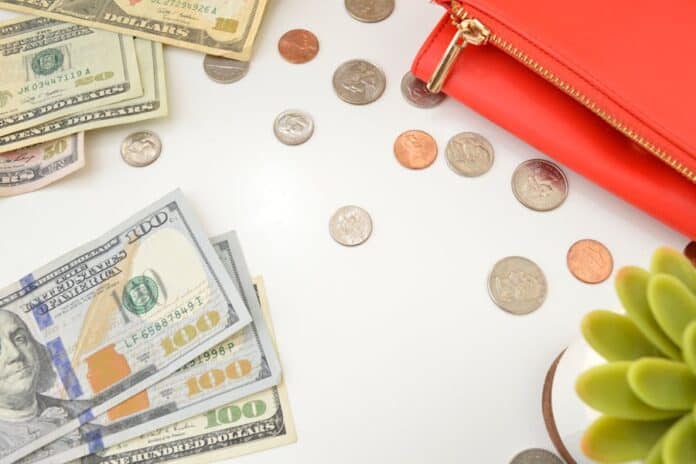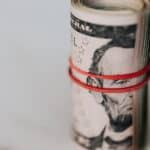In the world of coin collecting, not all coins are created equal. Some US coins, often found in everyday change, can be worth a significant amount of money. Whether you’re a seasoned collector or a curious novice, understanding which US coins hold the most value can be both fascinating and financially rewarding. From rare historical pieces to modern-day misprints, the realm of valuable US coins offers a treasure trove of opportunities. In this article, we’ll delve into the specifics of what US coins are worth money, highlighting key factors that influence their value, and providing insights into identifying these hidden gems. By the end, you’ll have a comprehensive understanding of how to spot and evaluate valuable coins, potentially turning your loose change into a lucrative collection.
What US Coins Are Worth Money?
Many US coins are worth more than their face value due to rarity, historical significance, or unique errors. Coins like the 1943 copper penny, 1969-S double die obverse penny, and rare silver dollars can fetch high prices among collectors. Key factors determining value include mint year, condition, and unique characteristics. Always check with a professional appraiser for accurate valuations.
Understanding Us Coins Are Worth Money
Many coin collectors and enthusiasts often wonder, “What US coins are worth money?” Understanding the value of different coins involves examining various factors such as rarity, historical significance, and condition. One of the most sought-after coins is the 1943 copper penny. During World War II, pennies were supposed to be made from steel to conserve copper for the war effort. However, a few copper pennies were mistakenly minted, making them extremely rare and valuable. A well-preserved 1943 copper penny can fetch a high price at auctions, sometimes reaching thousands of dollars.
Another valuable coin is the 1969-S double-die obverse penny. This coin features a noticeable doubling of the inscriptions on the obverse side, a minting error that makes it highly desirable among collectors. The value of this coin can vary depending on its condition, but it is generally worth significantly more than its face value.
Silver dollars, particularly those minted in the late 19th and early 20th centuries, are also valuable. Coins such as the 1878-1921 Morgan Silver Dollar and the 1921-1935 Peace Dollar are popular among collectors. Their value depends on factors like mint year, mint mark, and overall condition. For example, a Morgan Silver Dollar in mint condition can be worth several hundred dollars.
Additionally, some modern coins can be valuable due to minting errors. Coins with misprints, off-center strikes, or unusual features often catch the attention of collectors. These errors make the coins unique, increasing their desirability and value.
Understanding what US coins are worth money involves knowing the historical context and recognizing key features that make certain coins stand out. By paying attention to these details, you can identify valuable coins in your collection and potentially turn a simple hobby into a profitable venture.
Why Are Some Us Coins Worth More Money?
Historical Significance: Coins with a rich historical background tend to be more valuable. They offer a glimpse into the past and are often associated with significant events or periods.
Rarity: The rarer a coin, the more valuable it is. Limited mintage or coins that were accidentally released in small numbers can command high prices.
Minting Errors: Coins with minting errors are unique and often highly sought after. These errors can include double dies, off-center strikes, and wrong metal usage.
Condition: The condition of a coin, often referred to as its grade, significantly impacts its value. Coins in mint or near-mint condition are worth more than those that are worn or damaged.
Market Demand: The value of coins can fluctuate based on market demand. Coins that are currently popular among collectors can see a temporary increase in value.
How To Identify Valuable US Coins?
Identifying valuable US coins requires a keen eye and knowledge of specific characteristics that contribute to a coin’s worth. Whether you’re a seasoned collector or just starting, understanding these key aspects can help you recognize valuable coins in your collection. Here’s a step-by-step guide to identifying valuable US coins:
Mint Year: One of the first things to check when identifying valuable US coins is the mint year. Coins minted in certain years, especially older ones from the 19th and early 20th centuries, tend to be more valuable. Historical events and changes in minting practices during these periods can make coins from certain years highly sought after by collectors. For example, coins minted during the Civil War or the Great Depression often carry higher value due to their historical significance.
Mint Mark: The mint mark is another crucial factor in determining a coin’s value. This small letter or symbol indicates where the coin was minted. Certain mint marks are more desirable due to their rarity. For instance, coins minted in Carson City (marked with a “CC”) are often more valuable because the Carson City Mint had a relatively short operational period and produced fewer coins. Other valuable mint marks include “S” for San Francisco and “D” for Denver.
Condition: The condition of a coin, also known as its grade, plays a significant role in its value. Coins in mint or near-mint condition, which show little to no wear, are generally worth more than those that are heavily circulated and worn. Coin grading involves assessing factors such as luster, surface preservation, and strike quality. Professional grading services can provide an official grade, which can greatly influence a coin’s market value.
Minting Errors: Minting errors can make a coin uniquely valuable. These errors occur during the minting process and can include double dies, off-center strikes, incorrect planchets, and other anomalies. Coins with noticeable errors are rare and highly sought after by collectors. For example, the 1955 double die penny and the 2000 Sacagawea dollar mule error are famous examples of valuable minting errors.
Historical Context: Researching the historical context of a coin can also provide insights into its value. Coins tied to significant events or periods in history, such as commemorative coins, can have higher value due to their historical significance. Understanding the story behind a coin can make it more appealing to collectors who value the historical connection. For instance, coins minted during significant anniversaries or events like the Bicentennial quarter can be more desirable.
Demand Among Collectors: The value of a coin can also be influenced by current market demand. Coins that are currently popular among collectors can see a temporary increase in value. Keeping up with trends in the coin-collecting community can help you identify which coins are in demand. Coins that are part of a series or set that is actively being collected can also fetch higher prices.
When Should You Get Your Coins Appraised?
Determining the value of your coins can sometimes be complex, especially if you’re not familiar with the intricacies of coin collecting. Knowing when to get your coins appraised is crucial for understanding their worth and making informed decisions.
- If you have inherited a collection: Inherited coin collections may contain valuable pieces. An appraisal can help you understand their worth.
- Before selling: To ensure you get a fair price, have your coins appraised before selling them.
- After discovering a unique coin: If you come across a coin that seems unusual or rare, it’s a good idea to get it appraised.
- Periodically for insurance purposes: Regular appraisals can help keep your collection properly insured, reflecting its current market value.
Summary
Identifying what US coins are worth money involves understanding the key factors that influence their value. From historical significance and rarity to minting errors and conditions, each aspect plays a crucial role. By learning to recognize these factors, you can uncover valuable treasures in your coin collection. Regular appraisals and staying informed about market trends can help maximize your collection’s potential. Whether you’re a seasoned collector or just starting, the world of valuable US coins offers endless opportunities for discovery and profit.
FAQs
- What Are Some Of The Most Valuable Us Coins?
Some of the most valuable US coins include the 1943 copper penny, 1969-S double die obverse penny, and Morgan Silver Dollars.
- How Can I Tell If My Coin Is Valuable?
Check the mint year, mint mark, and condition, and look for any minting errors. These factors can indicate the coin’s value.
- Where Can I Get My Coins Appraised?
You can get your coins appraised at coin shops, by professional coin appraisers, or at coin shows.
- Are All Old Coins Valuable?
Not all old coins are valuable. Their value depends on rarity, condition, historical significance, and demand among collectors.
- What Should I Do If I Find A Rare Coin?
If you find a rare coin, it’s best to have it appraised by a professional to determine its value. Avoid cleaning it, as this can reduce its value.












